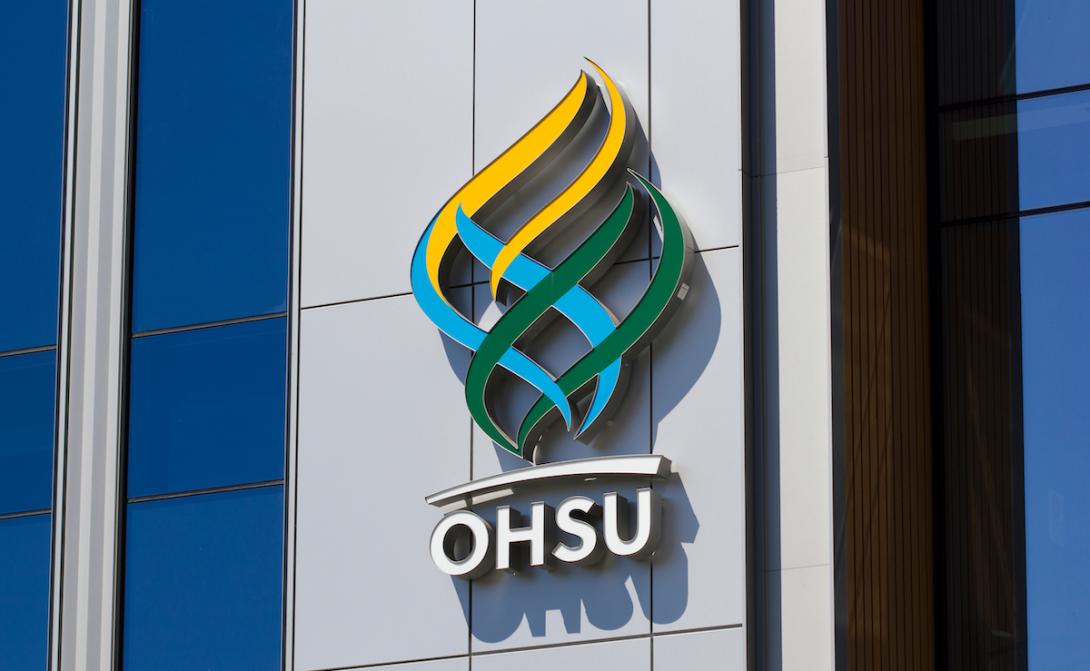
With the financial threat of the COVID-19 pandemic receding, Oregon Health & Science University is back to worrying about a problem that long preceded the lethal virus: the institution’s obligations to the Oregon Public Employees Retirement Fund.
OSHU’s liability to PERS rose to $595 million in the 12-month period ending July 1, up from $504 million at the start of that fiscal year, OHSU Chief Financial Officer Laurence Furnstahl told OHSU’s board of directors in a memo for the board’s Sept. 24 quarterly meeting.
The liability is up because PERS cut the assumed annual rate of return on its investment portfolio to 6.9% from the previous 7.2%, Furnstahl wrote. The lower the rate of return, the more that government entities such as OHSU owe the system in the coming years to provide sufficient money for PERS to make required pension payments to retirees.
To keep up with their legal obligations to the pension system, government agencies make annual payments into it. For the fiscal year that ended June 30, OHSU paid $47 million into PERS.
Over the coming decade, OHSU says it plans to pay down its obligation to PERS by about an extra $300 million on top of standard annual payments.
In its entirety, the state’s PERS has a total unfunded liability — the anticipated future payouts that PERS does not have the money to cover — of about $25 billion.
OHSU, as one of Oregon’s largest public employers, with more than 15,000 workers, has a large share of that obligation.
Before the pandemic, the huge government payments into PERS and the system’s big, legally required payouts to individual retirees were a staple of news coverage.
The pandemic and other crises pushed PERS off the front pages, but now it is edging its way back into public discussion.
“No one wants to talk about the biggest problem facing Oregon. It's not the pandemic. It's not homelessness. It's not racial justice. The biggest crisis facing Oregon is its public employee retirement system, or PERS,” asserted Eric Fruits, vice president of research at the Cascade Policy Institute, in a June opinion piece that ran in many news outlets. The Cascade Policy Institute promotes free markets and limited government.
More than 900 agencies participate in the PERS pension system, which makes payments to more than 153,000 retirees as well as 225,000 workers who are covered but not yet retired.
OHSU Profitability Drops
Despite OHSU’s worsening pension situation, the institution’s finances have brightened as patient volumes have recovered following the initial crunch of the pandemic last year.
For the 12 months that ended June 30, OHSU estimates it had an operating profit of $72 million on operating revenues of $3.7 billion, Furnstahl reported. Patient revenues for the 12 months were $2.5 billion, up from $2.2 billion for the previous 12 months, Furnstahl reported.
Still the profit level, as a percentage of revenues, is far below OHSU’s historic rate. For the 12 months ended June 30, the profit amounted to 2% of revenue, compared with anywhere from 4.2% to 5.4% before the pandemic, Furnstahl wrote.
Despite the lower profitability, OHSU is boosting compensation on various fronts.
For the current fiscal year, which started July 1, OHSU has allocated $4.5 million in “equity adjustments” for faculty, and OHSU is allocating a further $36 million this year for additional compensation increases, Furnstahl wrote. OHSU has about 3,200 faculty.
Also, administrative staff, mostly supervisors and managers, will get pay increases averaging 4% effective the end of September, on top of a one-time $5,000 payment made this summer, Furnstahl noted. There are about 1,900 such staff.
Finally, OHSU will be making a one-time $1,000 payment to a large number of OHSU workers, including clerical, housekeeping and other similar jobs represented by AFSCME; unionized OHSU law enforcement staff; as well as nurses represented by the Oregon Nurses Association. Those unionized workers also get cost of living and step increases under their contracts.
Despite reports of heavy staff turnover at some health care entities during the pandemic, OHSU’s staff remains stable by one measure. Furnstahl reported to the board that employee turnover in the fiscal year ended June 30 was much on a par with the previous two years. For example, turnover among nurses represented by the Oregon Nurses Association was 9.3% last fiscal year, up slightly from 9.1% the previous year and 9% the year before that. Among faculty, turnover was 8.9% last fiscal year, down from 10.9% the previous year and 10.8% the year before that.
You can reach Christian Wihtol at [email protected].